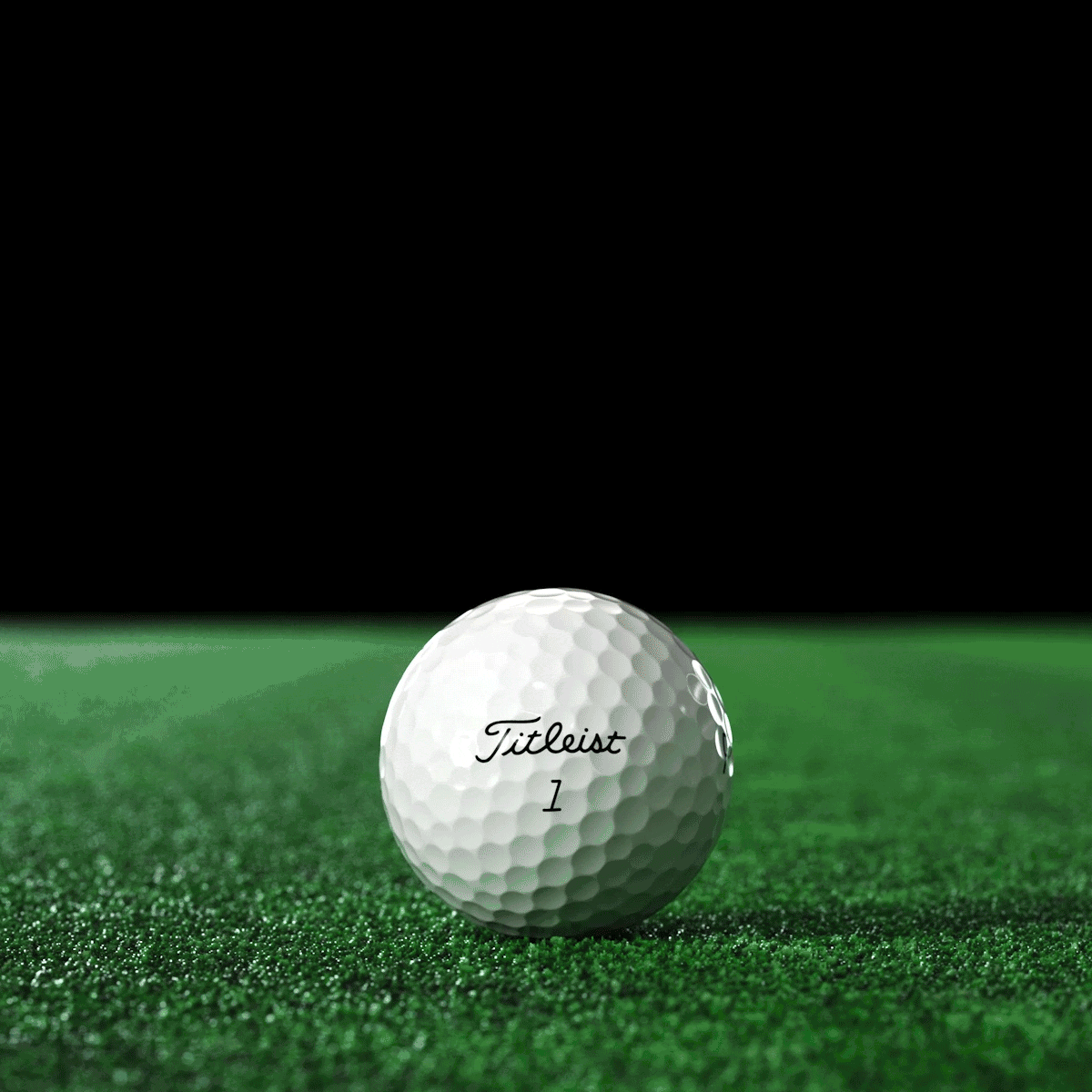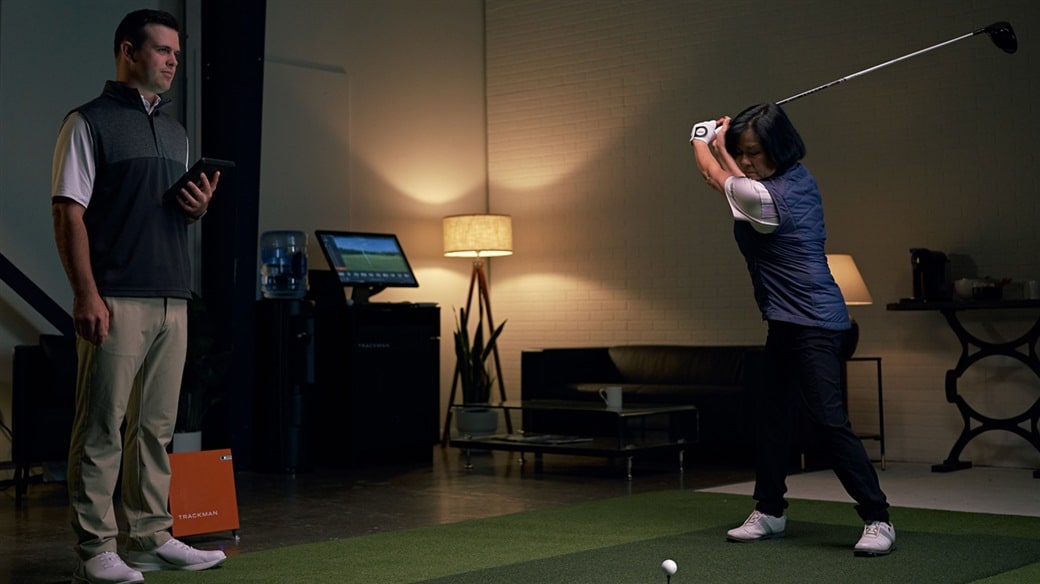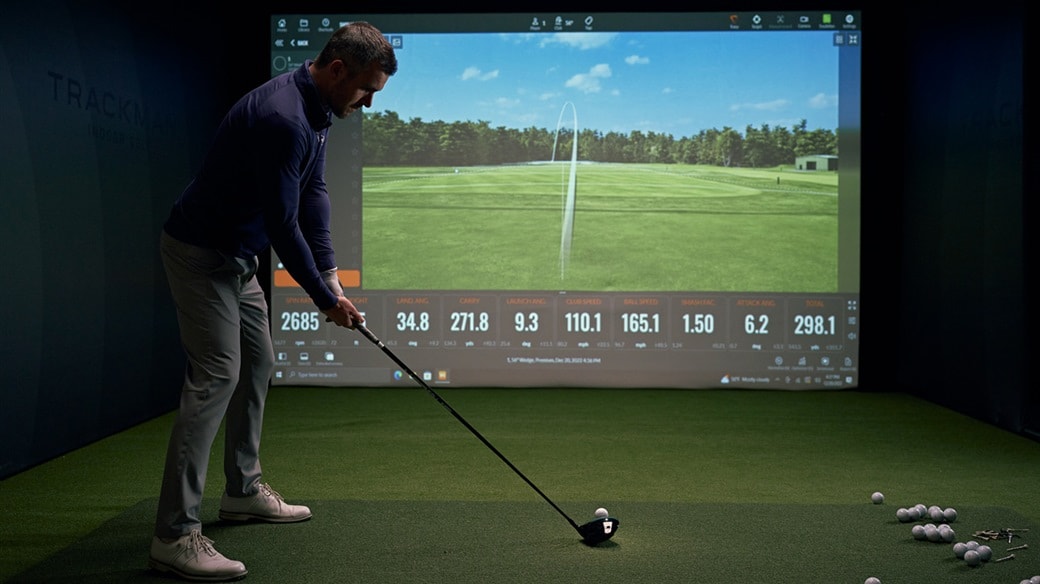More and more golfers are gravitating to indoor golf. For many of us, it's a fun and productive way to stay sharp when inclement weather or tight schedules prevent us from playing and practicing outdoors. Early indoor simulators were more of a golf novelty than a serious training tool, but with advances in today's technologies, the indoor experience is now an attractive option for even the most serious golfers. And Titleist's Radar Capture Technology (RCT) is playing a big role in this evolution.
Are you interested in playing, practicing, or even competing indoors? Perhaps you don't know if you're playing the right golf ball and want to experiment this winter? Or maybe you're in the market for new clubs and you're considering an indoor fitting? If your golf regimen includes indoor training of any kind, make the most of your time and play with a Titleist RCT golf ball. Now available in new Pro V1, new Pro V1x, Pro V1x Left Dash and AVX models, RCT takes the guess work out of indoor launch data and makes indoor golf feel much closer to the real thing.
Keep reading to hear what just a few Titleist partners are saying about RCT technology...
•••
TRACKMAN COLLABORATION AND THE IMPORTANCE OF MEASURED SPIN
As we reported last year, Radar Capture Technology (RCT) is an advancement that Titleist developed in collaboration with TrackMan, the industry leader in golf launch monitor technology. RCT works through radar reflective technology. A patterned RCT application on the casing layers of Pro V1, Pro V1x and now Pro V1x Left Dash and AVX allows TrackMan launch monitors to capture exact, measured spin rates – not estimated spin – on over 99% of shots hit in an indoor environment.
Why is it important to capture true spin rate? For the answer, we reached out to Matt Frelich, Vice President Sales and Business Development at TrackMan. Matt worked closely with Titleist Golf Ball R&D throughout RCT development and beta testing. An expert fitter in his own right, Matt knew what golf professionals and fitters needed and he was instrumental in helping Titleist bring RCT to market.

"TrackMan 4 units use Doppler radar to measure spin," Matt said. "Outdoors, TrackMan’s patented technology allows us to capture the launch spin during the first second of ball flight. However, indoors the ball only travels a very short distance, with time much less than one second, before striking a net or a simulator screen. This narrow capture window is not an issue for measuring most variables - like initial ball velocity, launch angle or launch direction, yet it does make it challenging to measure spin. This is because in that short distance, say ten feet or so, the ball may spin less than one or two full revolutions before the data stream is cut short.
With a standard golf ball and no reflective markings, you are not able to measure the spin rate indoors. If spin is not measured, you’ll see italicized numbers presented in the TrackMan shot analysis screens, which means that the spin rate is estimated. Before RCT, to measure spin indoors, you would need to apply reflective markers to the ball and orient the ball properly – which was an imperfect solution."
TrackMan’s estimated spin rates are based on a 3D collision model and a sophisticated algorithm developed by their R&D team. The algorithm will get you in the ballpark as far as projecting final shot data goes, but as Matt told us, for serious training and certainly for Driver fitting, we want measured spin.
"The down-range data can only be as good as the spin rate data, “Matt explained. “If you miss spin by a couple or a few hundred RPM, it's effecting the down range data. When you talk about doing fittings and dialing in your longer distances, the only way to be most accurate is to measure spin rate, along with all the other precisely measured variables. So that's why this project was so important. I wouldn't do a driver fitting without RCT indoors."
•••
WHAT GOLF INSTRUCTORS ARE SAYING
Since Pro V1 RCT and Pro V1x RCT were introduced last fall, feedback from Titleist partners has been overwhelmingly positive. Nathan Ouimette, a coach at Alta View Golf in Highland, UT, was an early RCT adopter and relies heavily on TrackMan data in his teaching.
“I’m always highlighting spin numbers that we get from Trackman to help the student understand ball flight and rollout when the ball hits the ground. What is really cool is when I work with a student indoors, helping them understand how to hit a variety of shots with different launch and spin numbers.

Then we head out to the course and have a playing lesson and they get the exact same response outdoors as what we were seeing on the indoor system. It really builds my students’ confidence to see how that precise measurement indoors leads to success on the course. Golf is a game that requires a lot of precision and these new RCT balls just add to our ability to help our students gain confidence.”
The expansion of RCT technology to Pro V1x Left Dash and AVX golf ball models allows coaches like Ouimette to tailor their instruction more precisely to a wider range of players – players who can benefit from distinct performance characteristics that fall outside the flight, feel and spin profiles of Pro V1 and Pro V1x.
•••
WHAT FITTING PROFESSIONALS ARE SAYING
The recent addition of Pro V1x Left Dash RCT and AVX RCT is also putting more power in the hands of club fitters, allowing them to fit indoors as expertly as they do in outdoor settings.
By using RCT to capture precise, measured spin rates, fitting professionals can dial in different clubhead and shaft options with much greater confidence. This results in their being able to make more effective recommendations which ultimately helps their golfers to optimize performance and play better golf.
"The golf ball is an incredibly important factor in the fitting equation," said Max Buerman, owner of Newport Indoor Golf in Newport, RI. Max was involved in beta testing for Pro V1x Left Dash RCT and AVX RCT and reported that optimizing the golf ball for his clients is often an eye-opening experience.

"Everyone who comes for a fitting is trying to figure out how to drop two or three strokes off their score. And with all four Titleist RCT models at my disposal, I'm able to dial in the numbers and show players how simply using the right ball will get them those strokes.
I hear it on a daily basis from golfers – 'Oh, I didn't realize the ball mattered.' And I can show them with real data, 'Yeah, the golf balls perform differently and playing the right ball for you is critical.' We'll compare balls side by side and they'll see the results instantly. Then we can use that best golf ball model throughout the rest of the fitting and optimize every piece of equipment in their bag.
I just had a TSR driver fitting last week, and we switched my client's golf ball up. We picked up eight yards of carry because he was spinning his original model under 2,000 rpm. We got him up to 2,200 rpm and it was perfect. So, it really does allow us to confirm results and personalize the fit to a much larger degree."



